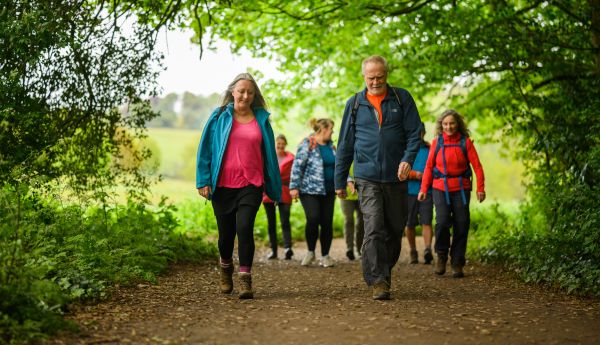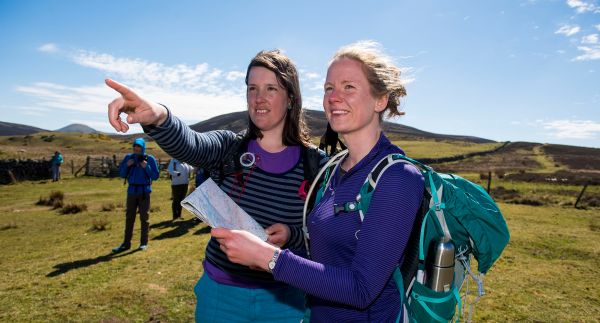A beginners guide to using a compass
Learning how to use a compass is a skill that everyone who enjoys walking outdoors will find useful.

Open up more walking opportunities by learning to use a compass
As you build your confidence as a walker you may wish to start exploring less well-trodden routes. Learning how to use a compass for orienteering is a fantastic way of opening up new walking opportunities.
Why do I need a compass?
Using a compass will help you:
-
Know which direction you are travelling in. This is called your heading
-
Align your map with your surroundings. This is called setting the map
-
Work out which direction an object or destination is from you. This is known as its bearing
-
Walk in a straight line. This is called following a bearing
Understanding your compass
A compass has 8 key features
-
The baseplate is the plastic base.
-
The compass dial also known as the compass wheel. It shows the four main compass points N-S-E-W. It also has a mark every two degrees up to 360 degrees.
-
The magnetic needle has a red end to indicate north and a white end for south.
-
The compass lines are on the bottom of the baseplate. They are also known as orienting lines.
-
The orienting arrow is fixed and aligned to north within the dial
-
The direction of travel arrow is the big arrow at the end of the baseplate
-
The index line is an extension of the direction of travel arrow
-
The map scales for 1:25 000 and 1:50 000 maps, plus a metric measurer (these are also known as Romer scales)
Watch our video to learn more about using a compass
How to use a compass
There are 4 key steps to using a compass:
Check your heading
To understand which direction you are heading, hold the compass in front of you so that the arrow faces the way you are walking. Then rotate the dial so that the N (for North) aligns with the red end of the compass needle. The figure on the rim of the compass dial is your heading.
Set the map
Using your compass to align your map to the landscape makes it easier to match the map to what you see around you. Lay the map out flat and place the compass on the map. Turn the map and the compass until the red compass needle aligns with the north-south gridlines on the map, with the red needle pointing to the top of the map. The map is now orientated to reflect the features around you. Take your time to keep matching the features you see around you to what you see on the map.
Take a bearing
Sometimes we might need to take a bearing to reassure ourselves we are heading in the right direction or to help relocate ourselves. A compass has 360 degrees marked around the edge, and a bearing is a measurement that tells us how many degrees from north our direction of travel should be.
To take a bearing, locate where you are on your map. Put the compass on the map so that the long parallel lines on your compass connect your current location with your destination point. Be sure the direction of travel arrow is pointing in the right direction.
Without moving the map or compass, rotate the dial so that the red arrow inside the compass bevel points towards north on the map and the parallel lines inside the compass bevel are parallel to the north-south lines of your map. The figure on the base of your direction of travel arrow is the bearing you need to follow.
Follow a bearing
Once you have taken the bearing, lift the compass off the map and hold it with the direction of travel arrow pointing straight ahead away from you. Rotate your whole body, including the compass, until the red end of the needle lies parallel with the red arrow in the compass bevel. You can now follow the direction of travel arrow until you reach your destination point. Keep checking your bearing along the way.
Practice using your compass
To test out your new skills, why not plan a short route close to home and navigate it using a map and compass. As you gain more experience, you can start exploring further afield. Walk with a friend and make sure your mobile phone is well charged and you’ll soon have the confidence to stride out on less well-trodden routes.

Planning a walking route
Choosing the location and distance are just two important aspects of planning a walking route. Here is our guide to a well-planned walk.

Our simple approach to navigating your walking route
Learning simple navigation skills will help build your confidence and reduce the chances of getting lost. Let us introduce you to the five Ds of navigation.

Where you can walk in England and Wales
Helping you understand your rights, where you’re allowed to walk, and how to find new places to explore.
